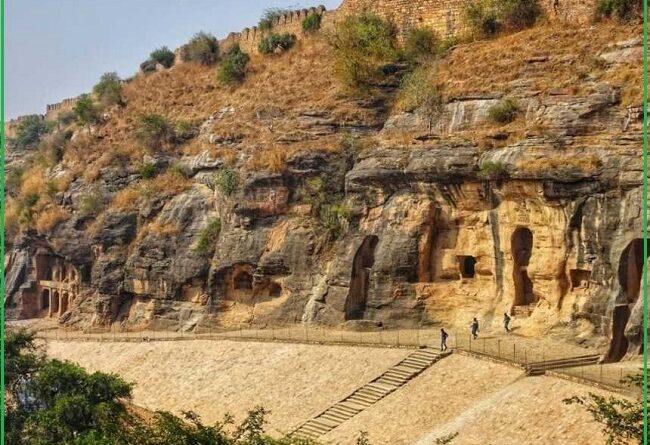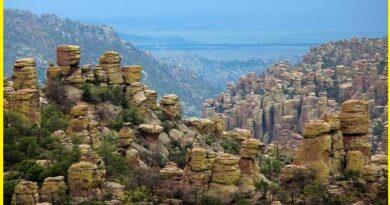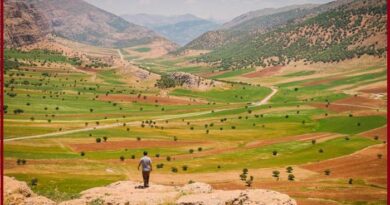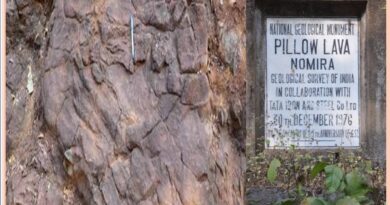The Rock-cut Jain monuments of Gwalior in Gopachal Hill-Geotourism
Gopachal Hill
Gopachal hill is one of the largest and most important rock-cut Jain monuments located near Gwalior Fort, India. It is popularly known as Ek Patthar ki Bavadi. There are around 1500 Idols of Jain Tirthankaras including 18 colossal statues, some up to 10m tall. The largest statue of Parsvanath seated on a Lotus is approximately 17 meters in height. One more Siddhachal Caves is located about 2 kilometers north of the Gopachal rock-cut monuments.
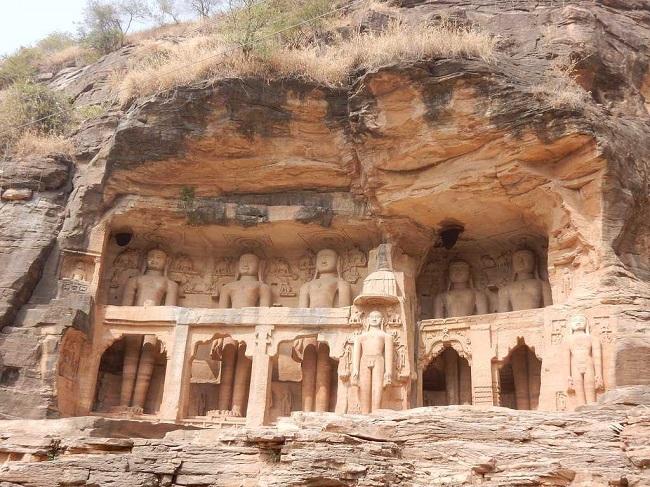
This magnificent Jain monument is date back to the 7th and 15th-century and is dedicated to the Jain Tirthankaras Adinatha, Mahavir, Neminatha, and Rishanabhanatha, whose idols are seen meditating. Gopachal Parvat is the largest and considered the most important of the five clusters of rock-cut Jain monuments in Gwalior. Its location is a little hidden away from the usual tourist routes, so it may be difficult to find the place.
History
Most of the Jain statues on the hill had been chiseled during the 15th century, though a few are thought to date back as far as the 7th century AD. 15th-century statues were built during the reign of the most tolerant Tomar King Dungar Singh and by his son and successor, Kirti Singh. The Tomar Queen was either a Jain or was a great follower of this nonviolent religion.
During the reign of the Tomara Rajas, the Jains seem to have been seized with an uncontrollable impulse to convert the cliff that sustains the fort into a great shrine in honor of their religion, The Siddhachal Jain colossi cave temple is one of the Archaeological Survey of India’s Adarsh Smarak Monument along with other monuments in the Gwalior Fort.
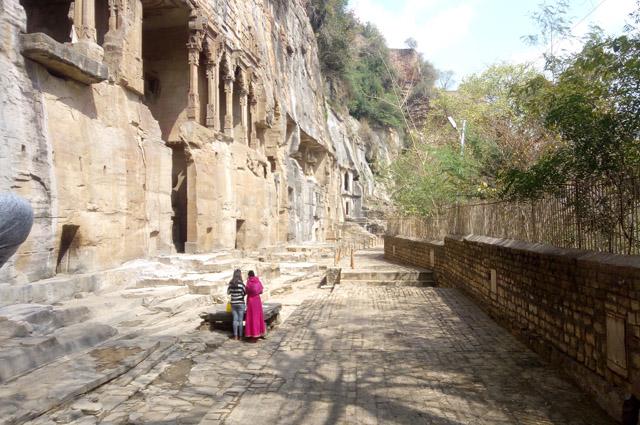
Both monuments were destroyed around 1527 when the Mughal Emperor Babur ordered their destruction. Babur explained this incident in a memoir. Even though the destroyed monuments and statues seem incomplete in terms of their formation, the beauty of these structures is still incomparable. The first European to describe these statues was Father Monserrat, who visited Gwalior during the reign of Akbar. He recorded 13 colossal figures and noted that the middle one was higher than the rest.
Geology of the area
The Gwalior fort is itself built on an outcrop of Vindhyan sandstone on a rocky hill called Gopachal Parvat. This feature is a long, thin, and steep slope with undulating terrain. Most parts of the Temple were made under the Tomar rulers, the entire hill, or rather the rocky cliff-sides of the hill were carved out to create about 100 towering statues depicting Jain Tirthankaras.

Things to do in Gopachal Hill
The stunning environment and scenery surrounding Gopachal Parvat at Gwalior Fort make it a wonderful tourist destination. Sightseeing these splendor pieces of architecture is a fantastic experience. Trekking is another exciting activity around the area.
There are five clusters of monuments that surround the hill
South-East Group: Popularly known as”Gopachal Atishya Kshetra” by the local Jain community. The group includes 26 caves in a row spanning about 800m. area. There are 13 inscriptions from 1468-1473 AD. The entrance to the site is close to the Dindayal City Mall.
South-West Group: The area is termed Trishalagiri. The group is near the Urvai Gate, just outside the fortifications. There are the oldest Jain monuments in Gwalior from the post-Gupta period dated 6th to 8th century AD.

Urvashi group: On both sides of the road, just before entering the hilltop fort gate, there are six inscriptions from 1440–1453 AD.
North-West group: The area is known as the Neminath Giri group after Lord Neminath. There is an inscription of 1470 AD. The group appears to have escaped the destruction by Babur, and thus the monumental image of Lord Neminath is in its pristine form.
North-East group: The area is termed the Naimgir group after Lord Neminath.
Also, read- Geotourism around the Picturesque Rahatgarh WaterFall Sagar India
Gwalior Fort
Gwalior Fort was built by a local king named Suraj Sen an 8th-century hill in Gwalior, Madhya Pradesh. The fort consists of a splendid structure and two main palaces, Gujari Mahal and Man Mandir, built by Man Singh Tomar. The fort has been controlled by a number of different rulers in its history. The Gurjari Mahal was built for Queen Mrignayani. According to a local legend, king Suraj sen was cured of leprosy, when a sage named Gwalipa offered him the water from a sacred pond, which now lies within the fort. The grateful king constructed a fort and named it after the sage. The sage bestowed the title Pal (“protector”) upon the king and told him that the fort would remain in his family’s possession, as long as they bore this title.
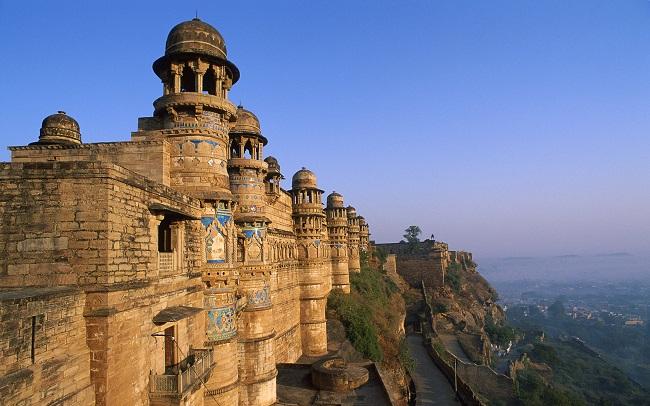
Gwalior city is rich in architectural marvels. The fort situated 100 m above the town of Gwalior is the main tourist attraction. Within the arena of the fort, Jain temple Gopachal’s rock-cut Jain monuments create a unique monuments group including Siddhachal Caves, with hundreds of Jain Tirthankaras.
World’s ‘Oldest’ Recorded Zero Symbol
A plaque dating back to the ninth century on a wall of the Chaturbhuj temple depicts the circular figure “O”. This symbol is considered the oldest recorded symbol of zero as we know and use the digit today. The inscription at Chaturbhuj temple was also considered to be the earliest recorded example of the usage of zero.
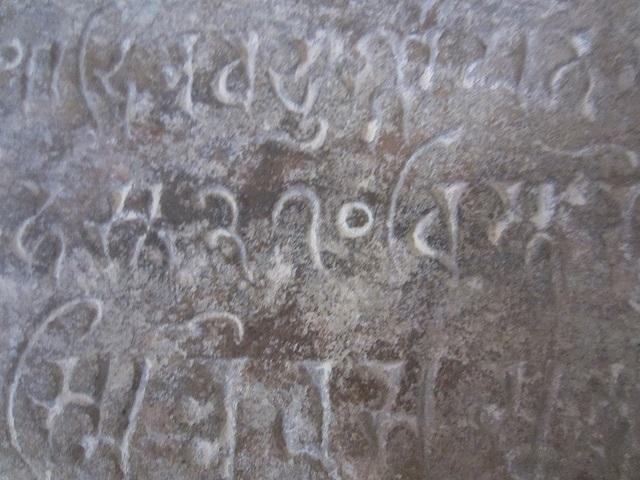
How to reach Gopachal hill
Gwalior is well connected via Air, Rail, and road. From here you can get direct flights from Mumbai and Delhi.
